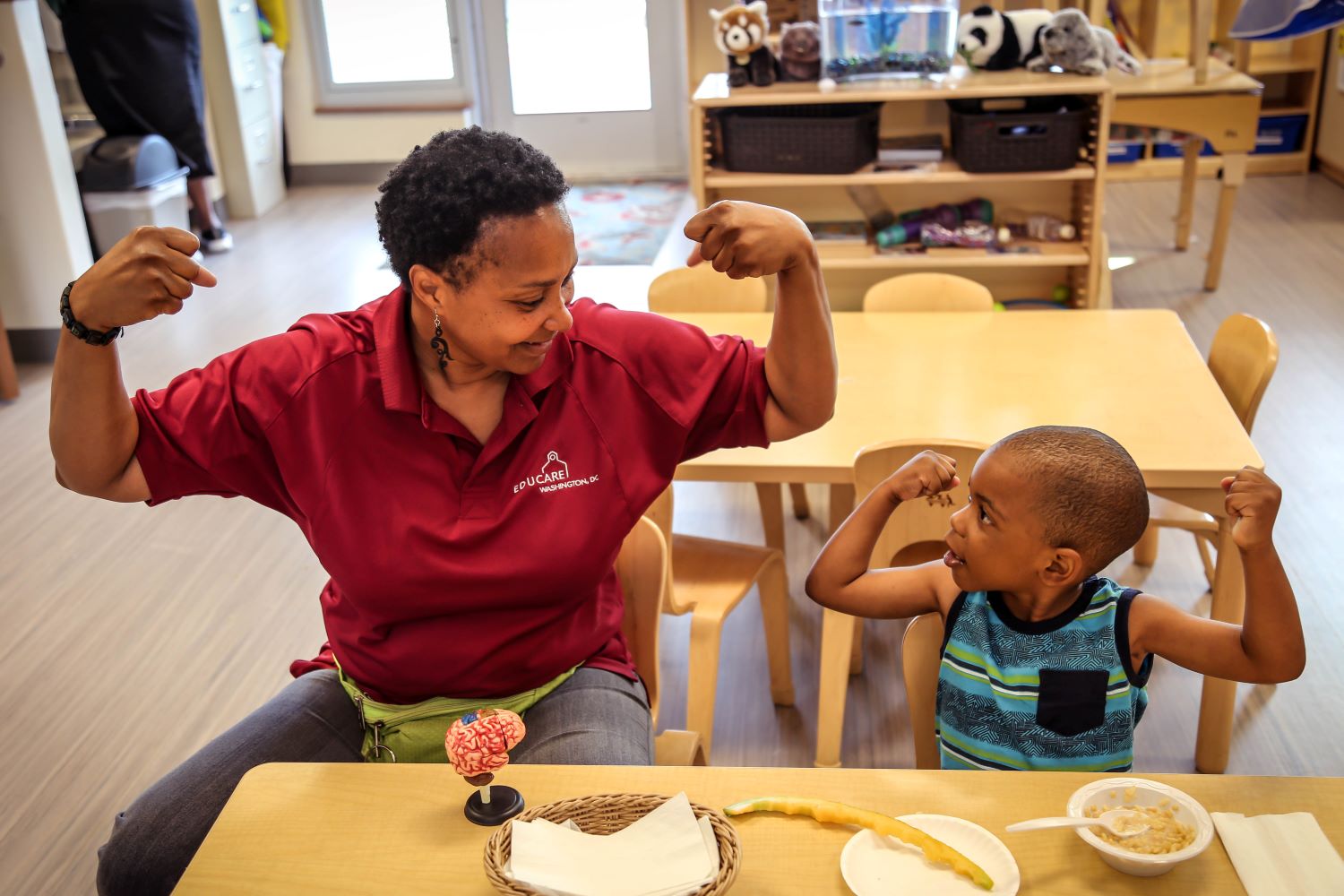 Effective individualization leads to positive outcomes for infants, toddlers, and their families when teachers, home visitors, and family child care providers understand and embrace the “why,” “what,” and “how” of individualization. As staff learn more about the purpose of individualizing and become skilled in observing, reflecting and interpreting, and using information for planning and implementing plans, they:
Effective individualization leads to positive outcomes for infants, toddlers, and their families when teachers, home visitors, and family child care providers understand and embrace the “why,” “what,” and “how” of individualization. As staff learn more about the purpose of individualizing and become skilled in observing, reflecting and interpreting, and using information for planning and implementing plans, they:
- Are better prepared to understand each infant and toddler’s developmental stage
- Are thoughtful about how to offer support to further each child’s development and learning
- Demonstrate through their actions that they understand the critical role that positive adult-child relationships play in how infants and toddlers develop
- Support the family’s role as their child’s first and most important teacher
- Know the value of families’ input and actively seek it out
- Evaluate the effectiveness of what they implement by continually observing and documenting, interpreting, communicating with families, reflecting, and refining plans
This is what it means to be intentional. As staff become more purposeful in their individualization practices, they see more opportunities to plan for possibilities and learning experiences that nurture each infant and toddler and deepen their relationships with children’s families. This intentional, individualized care is the path to positive learning and life outcomes for very young children and their families. Education leaders like you ensure program structures, practices, and professional development opportunities are in place to support staff in planning for and providing individualized care.
Just as no two children are alike, no two programs serving infants and toddlers are alike. How individualization is promoted and carried out will differ from program to program. But when programs ensure high-quality individualized care, it can make all the difference for each child’s current and future well-being and success in school and in life.
Read more:
Resource Type: Article
National Centers: Early Childhood Development, Teaching and Learning
Age Group: Infants and Toddlers
Audience: Directors and Managers
Last Updated: September 12, 2024